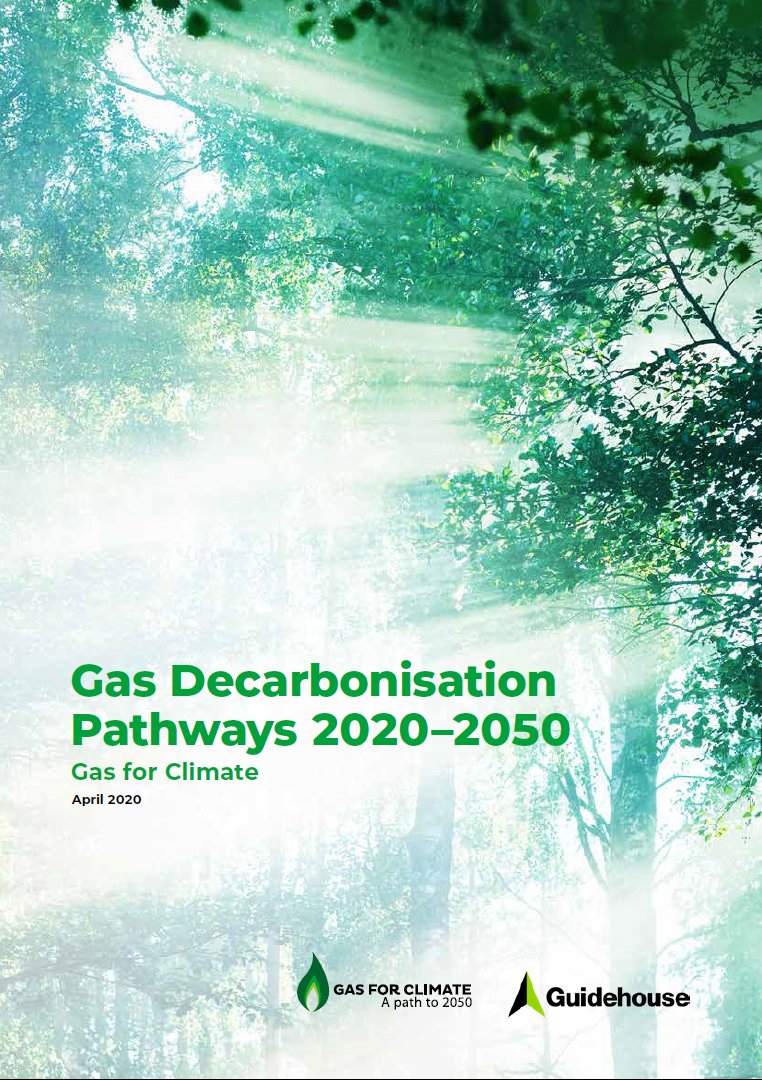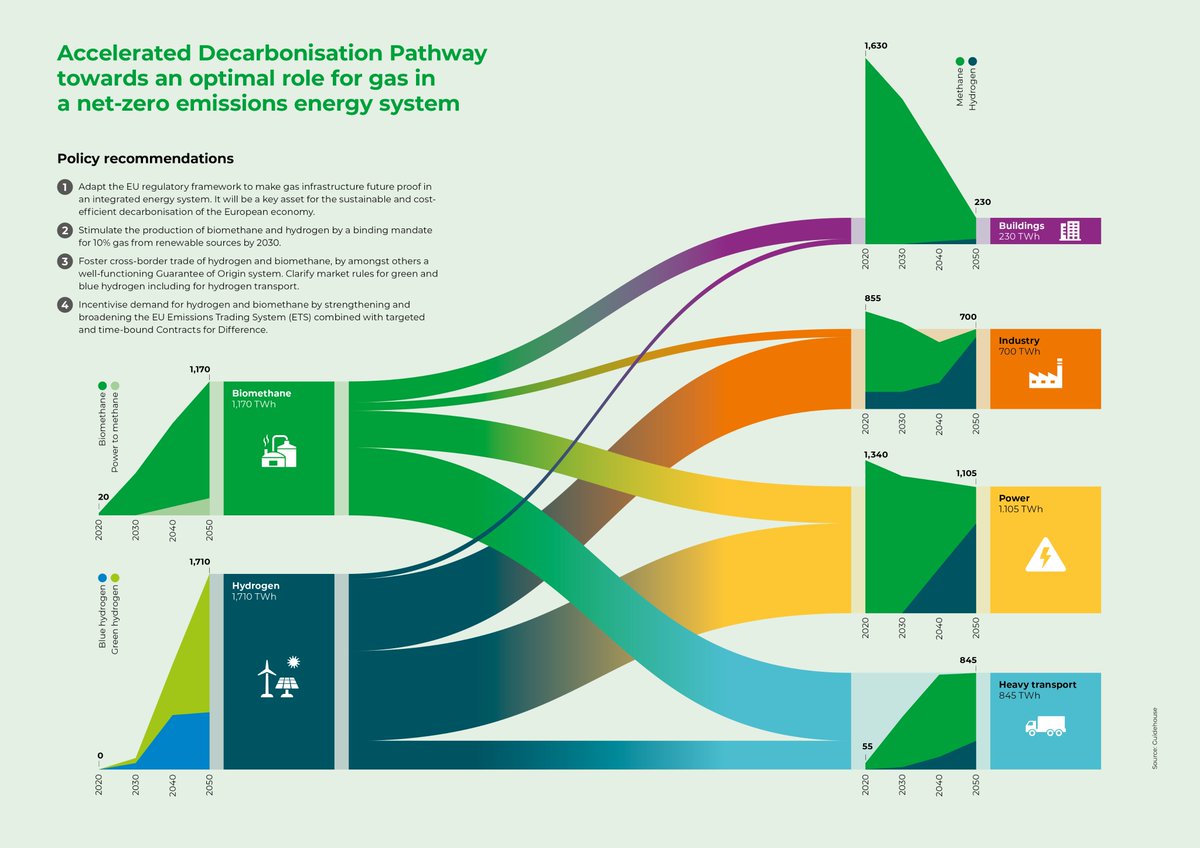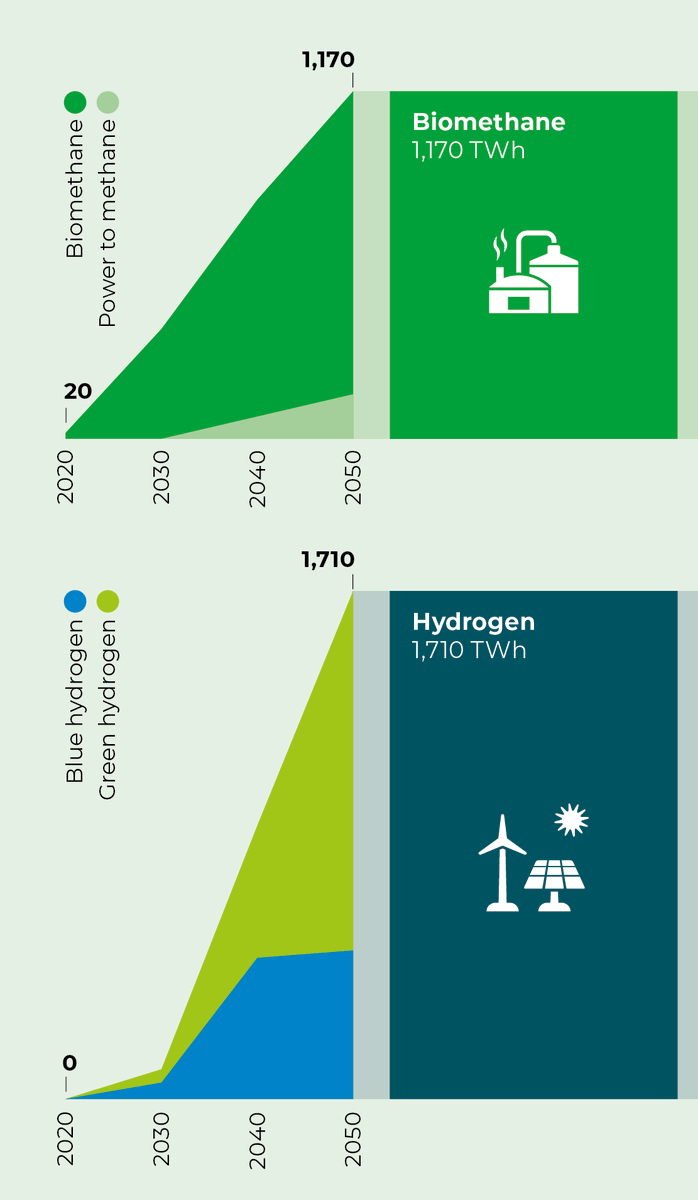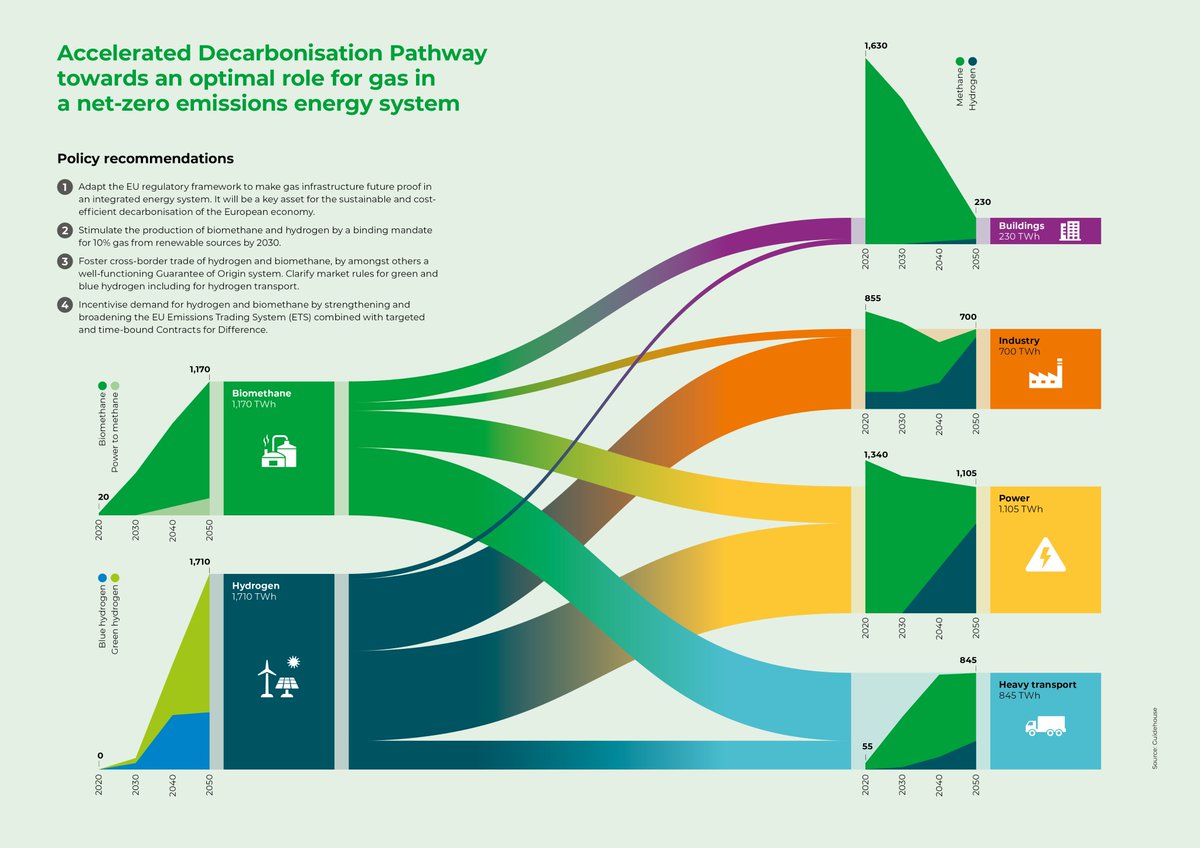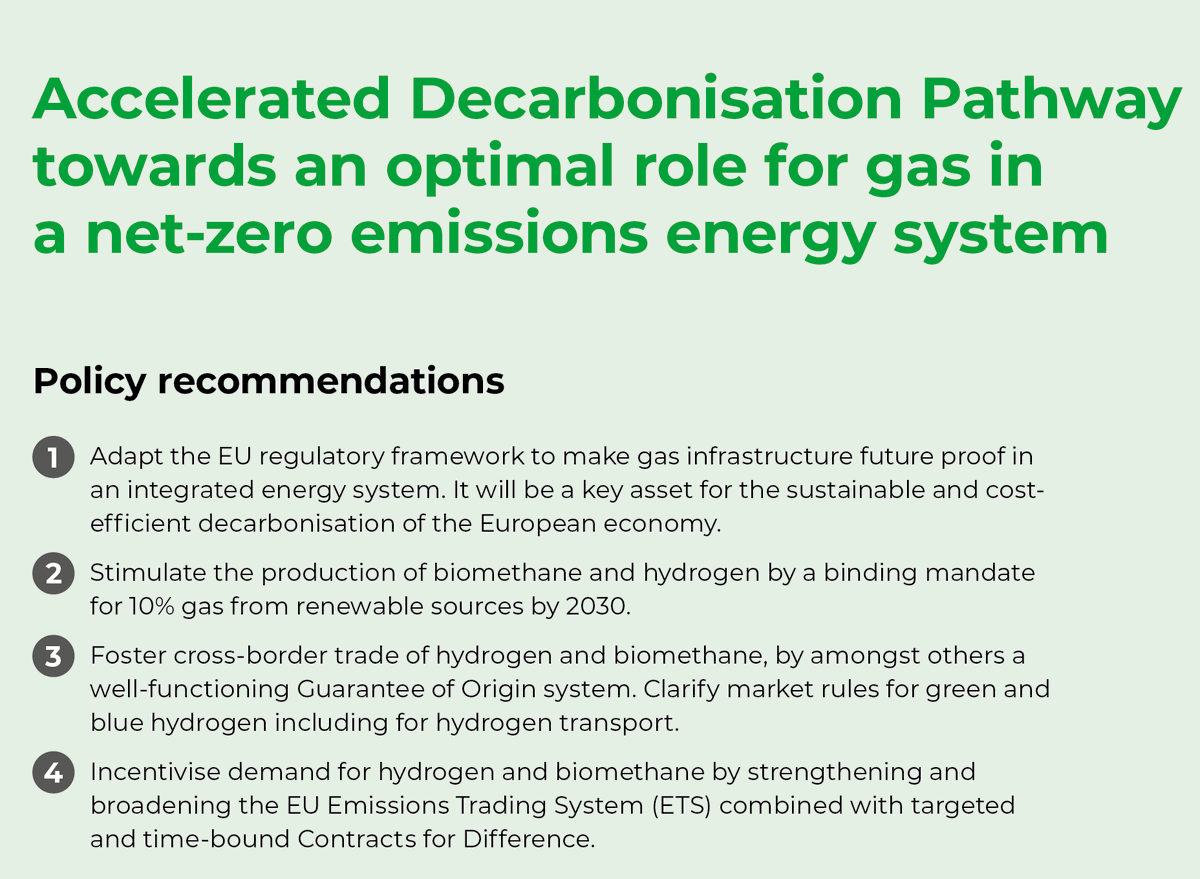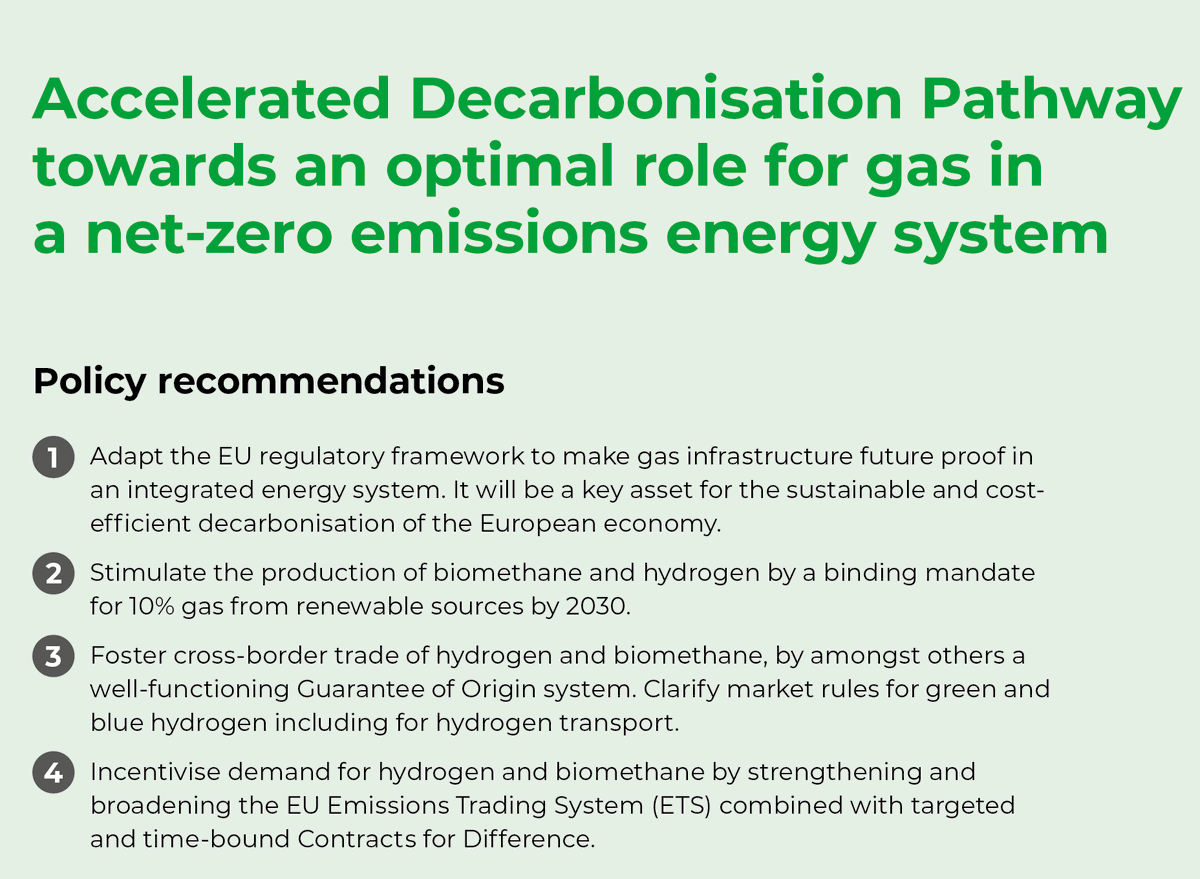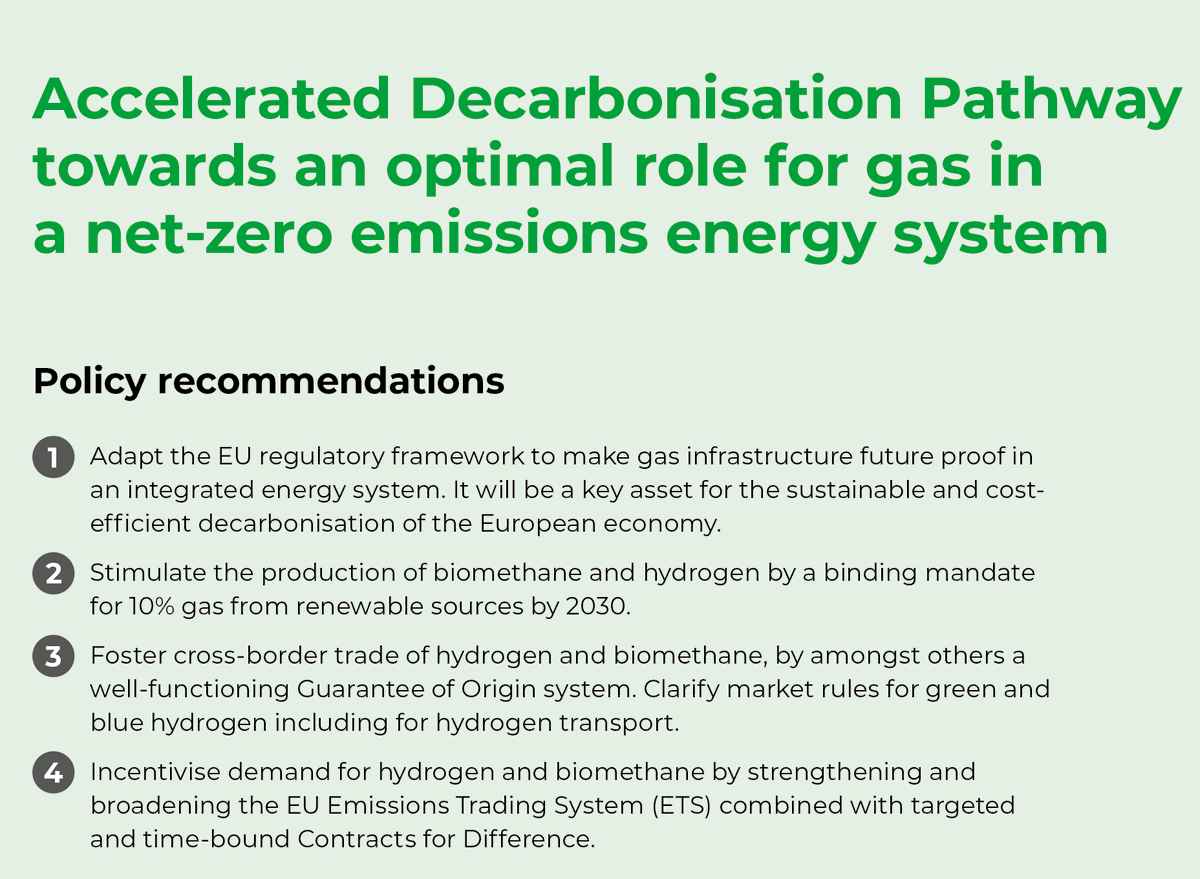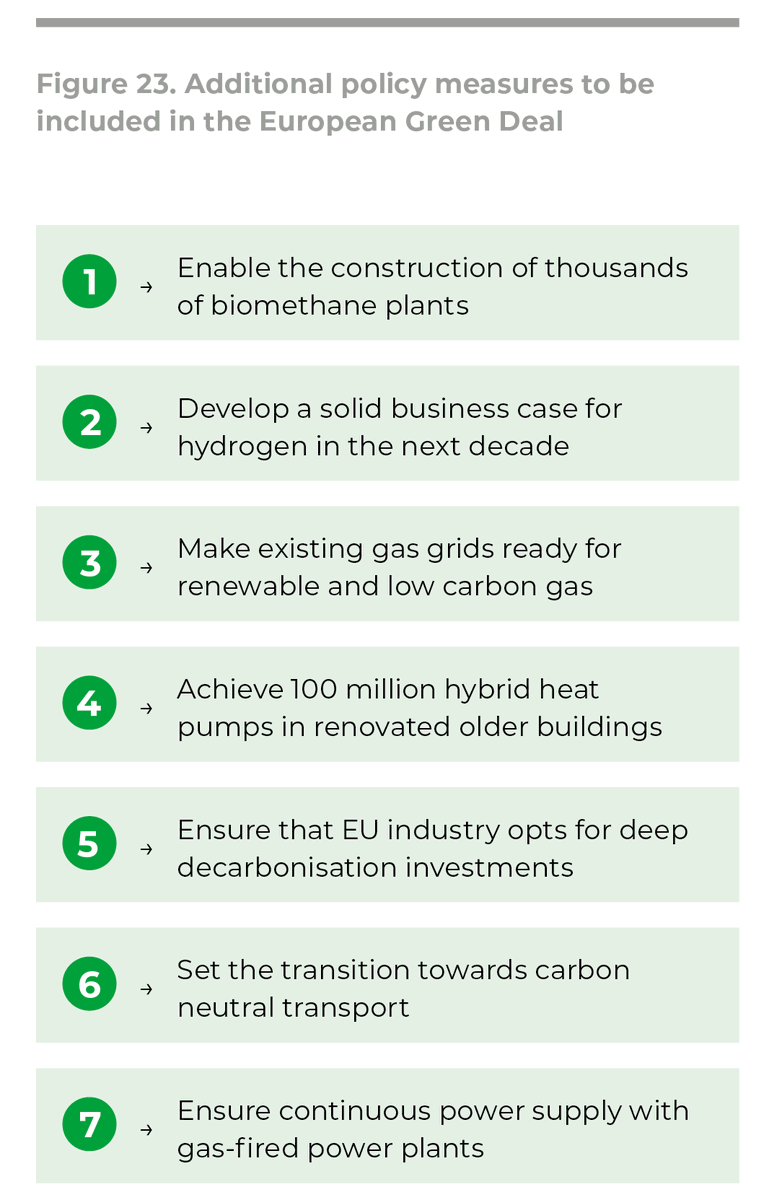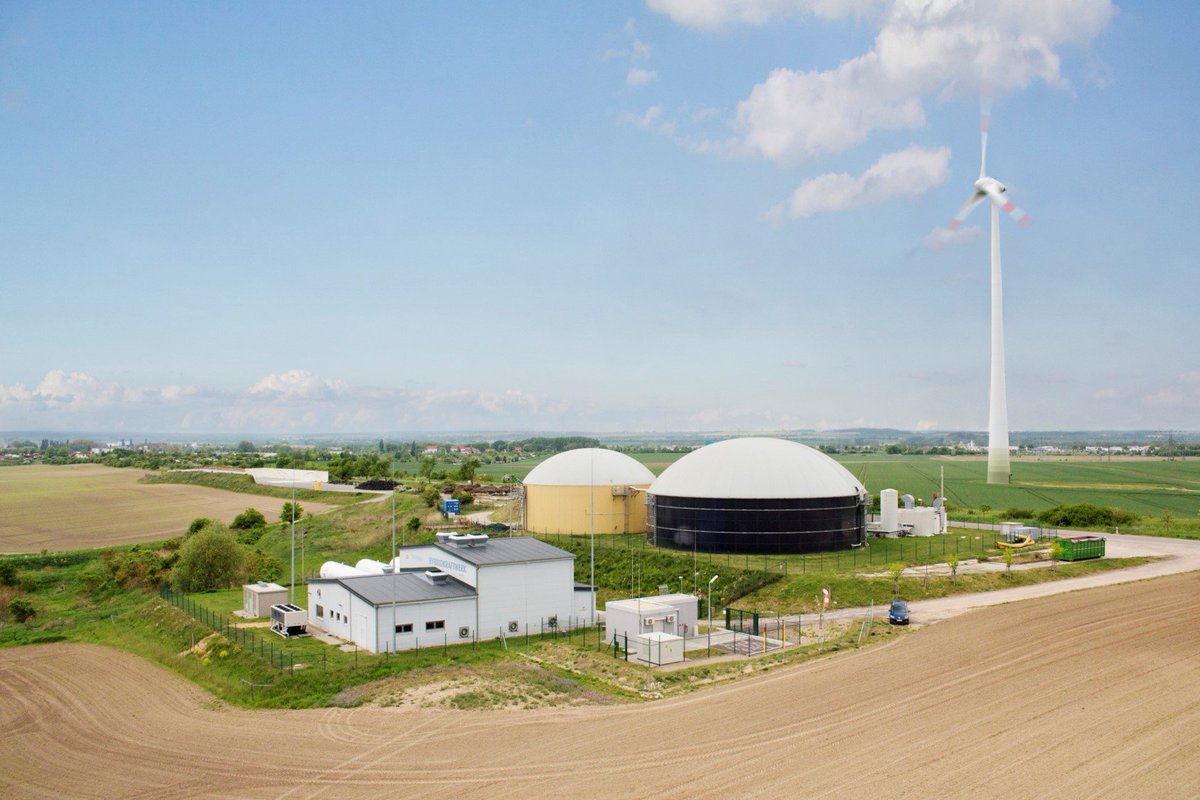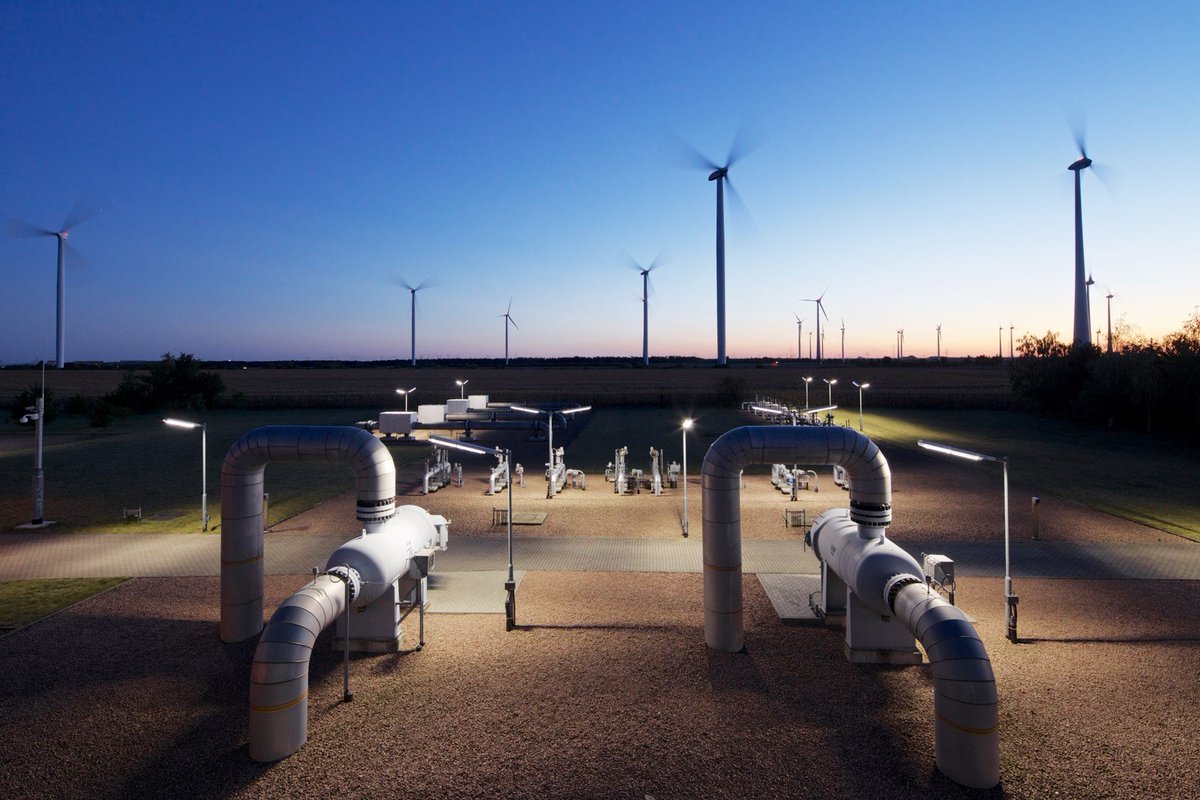Published today: our new #GasforClimate report! Gas Decarbonisation Pathways 2020-2050. How to achieve net-zero emissions in the EU energy system, at an affordable cost. By @GuidehouseESI (former Navigant/Ecofys)
Download it here: https://gasforclimate2050.eu/sdm_downloads/2020-gas-decarbonisation-pathways-study/">https://gasforclimate2050.eu/sdm_downl...
Download it here: https://gasforclimate2050.eu/sdm_downloads/2020-gas-decarbonisation-pathways-study/">https://gasforclimate2050.eu/sdm_downl...
In our Accelerated Decarbonisation Pathway, we explore what can already be done in the 2020s to grasp the opportunities and ramp up #renewable and low-carbon gas to play its role in getting to net-zero emissions in EU energy, alongside ambitious electrification. #netzero
On the left, note how in the coming decade, #biomethane can already ramp up towards its full 2050 potential, and how the big jump of green and blue #hydrogen towards its 2050 potential can be prepared. #GasforClimate
On the right, buildings, industry, and transport transform their energy use, gradually taking up biomethane and hydrogen, alongside renewable electricity and heat. Gas-fired units provide the dispatchable power to complement renewable electricity generation.
The coloured bands in the middle part of the diagram show the 2050 flows of #biomethane and green and blue #hydrogen towards the different uses.
#GasforClimate members (10 gas transmission system operators and 2 biogas consortia) are ready to facilitate this transition, working together with many European companies on the supply and demand side.
The 12 members of the Gas for Climate consortium are all on Twitter too: @consorziobiogas, @European_Biogas, @enagas, @EnerginetDK, @FluxysGroup, @Gasunie, @GRTgaz, @Ontras_Netz, @OpenGridEurope, @snam, @swedegasinfo, and @Teregacontact.
Kickstarting the gas decarbonisation pathways is a good fit with the aims of the European Green Deal: reducing emissions in an affordable way, generating future-proof economic activity and jobs, bringing the EU at the forefront of global developments. #GasforClimate #EUGreenDeal
To enable the gas #decarbonisation pathways, the analysis leads to 4 main recommendations, on the regulatory framework for the infrastructure, stimulating the production of renewable and low-carbon gases, fostering international trade, and incentivizing demand.
Our main policy recommendations are:
1. Adapt the EU regulatory framework to make
gas infrastructure future proof in an integrated
energy system. It will be a key asset for the
sustainable and cost-efficient decarbonisation of
the European economy. #GasforClimate
1. Adapt the EU regulatory framework to make
gas infrastructure future proof in an integrated
energy system. It will be a key asset for the
sustainable and cost-efficient decarbonisation of
the European economy. #GasforClimate
2. Stimulate the production of #biomethane and
#hydrogen by a binding mandate for 10% gas
from renewable sources by 2030.
#hydrogen by a binding mandate for 10% gas
from renewable sources by 2030.
3. Foster cross-border trade of hydrogen and biomethane, by amongst others a well-functioning Guarantee of Origin system. Clarify market rules for green and blue #hydrogen including for hydrogen transport.
4. Incentivise demand for hydrogen and biomethane by strengthening and broadening the EU Emissions Trading System (ETS) combined with targeted and time-bound Contracts for Difference.
In the coming 3 decades, we see 5 phases in the Accelerated Decarbonisation Pathway, towards 100% renewable and low-carbon gases by 2050. #GasforClimate
On the 2 gases (biomethane and hydrogen), the gas grids, and the 4 demand sectors (buildings, industry, heavy transport, dispatchable power), we formulated 7 proposals for the EU Green Deal.
1. Enable the construction of thousands of new biomethane plants. Sustainable biomethane from sequential cropping, agricultural and forest residues, and organic waste plays a major role, e.g. in hybrid heating systems for buildings.
Photo: @European_Biogas
Photo: @European_Biogas
2. Develop a solid business case for hydrogen in the next decade. Green hydrogen (from renewable electricity) and blue hydrogen (from natural gas with carbon capture and storage) help decarbonize industry, heavy transport, and dispatchable power.
Photo: @ONTRAS_Netz
Photo: @ONTRAS_Netz
3. Make existing gas grids ready for renewable and low carbon gas. Biomethane can be fed into natural gas grids, but needs to be collected and compressed. Gas transport pipelines can be repurposed to transport hydrogen too.
Photo: @ONTRAS_Netz
Photo: @ONTRAS_Netz
4. Achieve 100 million hybrid heat pumps in renovated older buildings. Hybrid #heatpumps can be a cost-efficient solution where gas distribution grids are already available. #GasforClimate
5. Ensure that EU industry opts for deep decarbonisation investments. A meaningful and increasing carbon price, together with a carbon border adjustment, is an essential tool in this respect. #EUGreenDeal
6. Set the transition towards carbon neutral transport. While #electrification plays a big role in passenger cars, heavy road transport, ocean shipping, and aviation can use renewable gases and fuels based on those.
7. Ensure continuous power supply with gas-fired power plants. In a future EU power system with high shares of #wind and #solar, renewable gas-fired units can provide zero-carbon dispatchable power as a complement.
That’s it for this thread!
The Gas Decarbonisation Pathways 2020-2050 report has all the details, in a solid 226 pages ;)
It’s freely available on our website: https://gasforclimate2050.eu/publications/ ">https://gasforclimate2050.eu/publicati... #GasforClimate
The Gas Decarbonisation Pathways 2020-2050 report has all the details, in a solid 226 pages ;)
It’s freely available on our website: https://gasforclimate2050.eu/publications/ ">https://gasforclimate2050.eu/publicati... #GasforClimate

 Read on Twitter
Read on Twitter